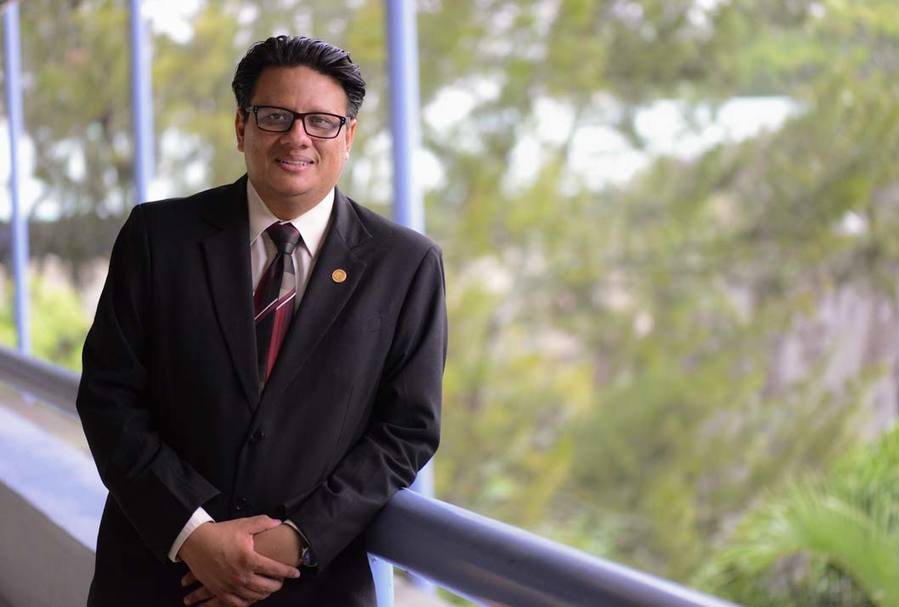May 7 2020
A new robot-assisted care system based on mobile device application and virtual platform enhances therapeutic effectiveness by nearly 11.3% within a period of 10 weeks.

Image Credit: Ruvid.
The system, designed by Eldon Glen Caldwell, PhD in Computer Engineering from the University of Alicante, enables experts to perform remote and face-to-face work, decreasing the costs for patients and users.
The purpose of the system is to enhance the treatment of dyslalia, a disorder that results in an incorrect pronunciation of phonemes. The system includes a platform that combines a robot with a mobile device application that increases therapeutic effectiveness in functional, organic, and physiological dyslalia.
This technology had been tested and validated with real therapists and patients, and it is now aimed at people suffering from non-severe articulation disorders and dyslalia, which require low monitoring or low- to medium-complexity therapies.
Users with autism, Down syndrome or dyslalia due to strokes that can be classed as such.
Eldon Glen Caldwell, PhD, Computer Engineering, University of Alicante
Benefits
The capability of this robotic platform has been shown both during the accounts offered by supervisors and users, as well as in the experimental validation.
Experimentally, it has been proved that using the platform and the mobile device application improves therapeutic effectiveness by up to 11.3% in ten weeks, with a statistical reliability of 95%. From the fifth week of use onwards, statistically significant changes are observed in the groups using the technology without time restrictions.
Eldon Glen Caldwell, PhD, Computer Engineering, University of Alicante
The users feel that the robotic platform is simple to use, flexible, and user-friendly for patients, and can be accessed from anywhere instead of being able to use only in face-to-face sessions with the therapist. In this regard, the researcher notes, “costs associated with face-to-face sessions could be reduced by at least 50%.”
Over the past few years, there has been a growth in studies into the creation of IT applications for mobile devices and robotic applications for therapeutic use.
Eldon Glen Caldwell has developed the robotic system by combining a physical robot with a virtual emulator, which is the only system available at present in the field of speech and language therapy and, particularly, in organic, physiological, and functional dyslalia.
Besides other advantages, the system provides several technologies, like integrated voice recognition, a robot archetype for enabling the “human-robot” relationship, as well as extensive control and programming of the physical actions of the robot.
Background
The new system forms part of the thesis chosen by Eldon Glen Caldwell under the guidance of lecturers Miguel Ángel Cazorla from (University of Alicante) and José María Cañas from (Rey Juan Carlos University). Recently, the viva session was conducted online, in accordance with the restrictions due to the COVID-19 crisis.
The thesis received a distinction and enables the treatment of language and speech disorders, as the global prevalence of conditions that require therapy and associated with functional, organic, and physiological dyslalia in childhood is between 8% and 9%.
According to the 2015 World Health Organization reports, 37% of the patients who recovered from an incident associated with cardiovascular diseases suffered from some kind of articulation disorder or dyslalia related to speech or language skills.
It is important to keep working on this kind of systems with a view to overcoming time restrictions on the execution of therapeutic speech strategies, reducing costs (particularly to the benefit of socially vulnerable populations), increasing the productivity of professionals through the use of virtual environments, and promoting playful interaction between patients and robots.
Eldon Glen Caldwell, PhD, Computer Engineering, University of Alicante
Caldwell performed a portion of his study in Costa Rica, his home country.
He concluded saying, “In addition to the excellent teamwork with my thesis directors Miguel Ángel Cazorla and José María Cañas, I am grateful for the multidisciplinary collaboration with Carlos Morales, Emilia Solís, Silvia Soto and Adriana Jones in the functional and experimental validation of the platform at the University of Costa Rica and the Special Education Centre of Heredia.”